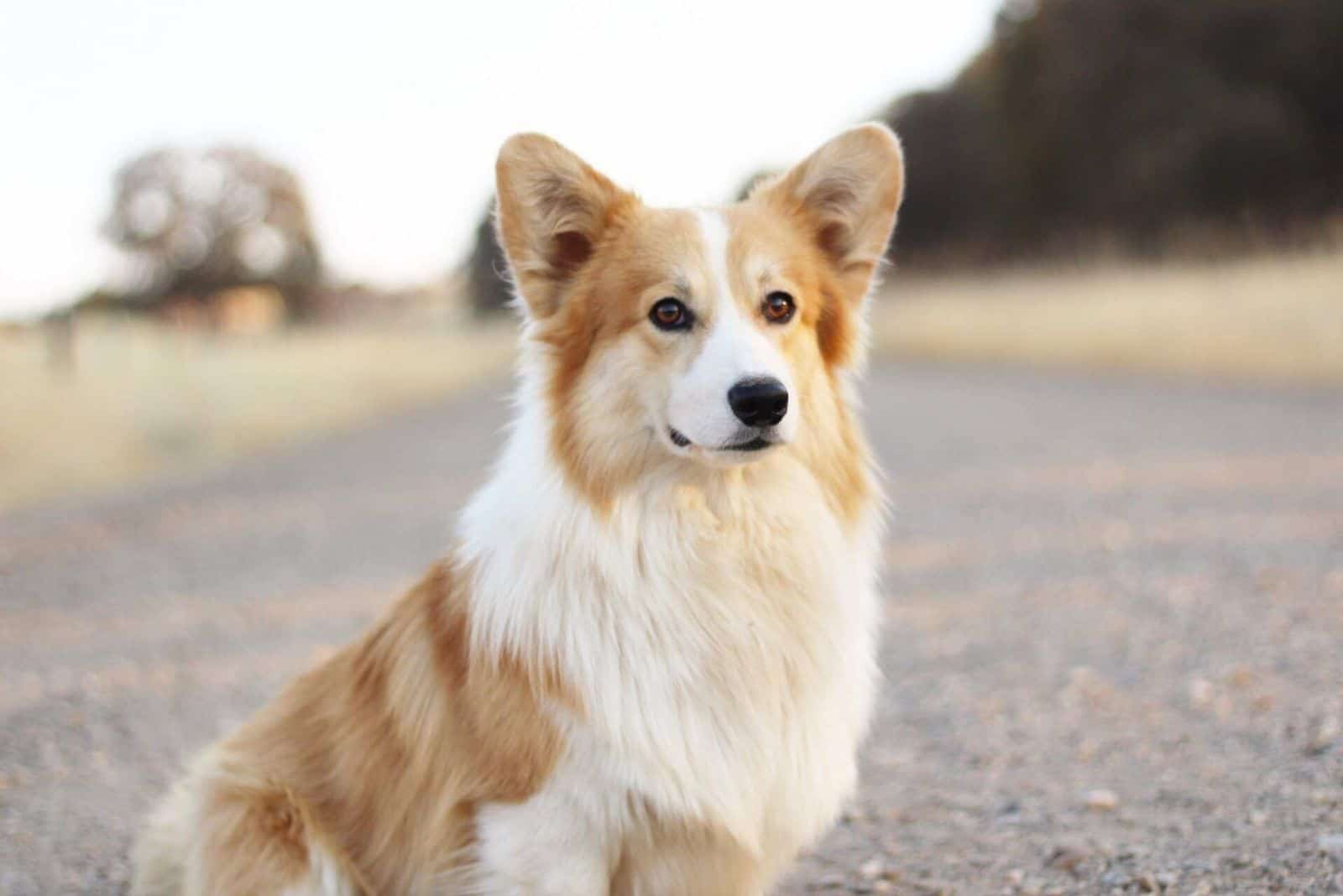Planning to get a Pembroke or a Cardigan Welsh Corgi puppy? Well, you might get a furry surprise named the fluffy Corgi!
Although these doggies are quite rare, it’s not impossible to get one, especially if both of the puppy’s parents possess the “fluffy gene”.
No one’s saying that regular Corgis aren’t fluffy, but these long-haired versions make you feel like you’re cuddling a cloud instead of a dog!
Some people might mistake them for a Pomeranian Corgi mix because of the fluffiness. However, fluffy Corgis are categorized as purebred Corgis with excessive feathering.
Unfortunately, this type of Corgi isn’t acknowledged by most of the kennel clubs or showrooms, although breeders are doing their best to make these furry beauties more common.
In this article, you’ll have the chance to learn everything you ever wanted to know about these fluffy meatballs, and I’m sure you’re going to love them even more!
So, let’s learn all about that fluff!
Fluffy Corgi Origin
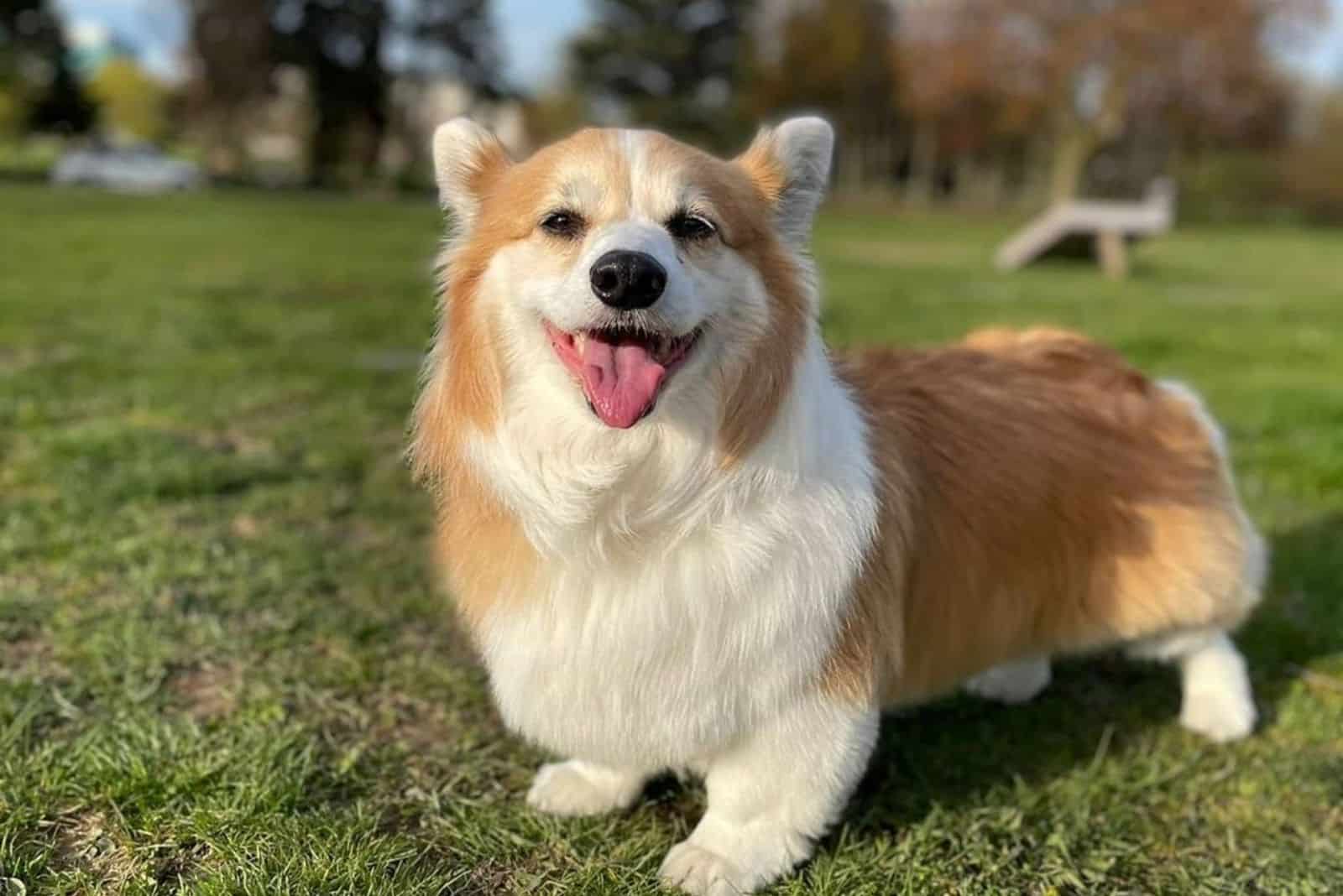
A Fluffy Corgi is everything but an ordinary dog for many reasons.
First of all, we can all agree that Corgis, in general, are adorable and loyal, which makes them great family dogs. They’re playful and love to spend time outside, which is perfect for people who enjoy long walks or spending time at the park.
However, not many people know that in the past, their primary purpose was to herd sheep and cattle, which is why they’re easily adaptable to new environments and situations.
Because of their history, Corgis can easily adapt to farm life, and they might become a great helper as well.
Before we continue, it’s important to mention that this type of dog is divided into two breeds:
• Cardigan Welsh Corgi
• Pembroke Welsh Corgi
There are certain physical dissimilarities between the two, but the most significant one is the size. The latter breed is considered larger in both height and weight.
However, there’s no difference in terms of fluff, meaning that puppies from each of these breeds can be born with additional fluff.
The double coat is one of the main characteristics of Corgis. Some will also say they already have a fluffy coat, and they won’t make any mistake in that, but the fluffy versions of this breed have even fluffier coat hair!
Fluffiness might not be the first thing on your list of traits that your future dog should have, but can you imagine your little one’s happiness when she sees a fluffy Corgi baby? I’m sure she’d be excited just like Agnes Gru when she gets her fluffy unicorn.
I think it’s clear enough how cuddly those little doggies can be, so let’s talk more about those fluffy balls of fur.
Are Fluffies Pembrokes or Cardigans?
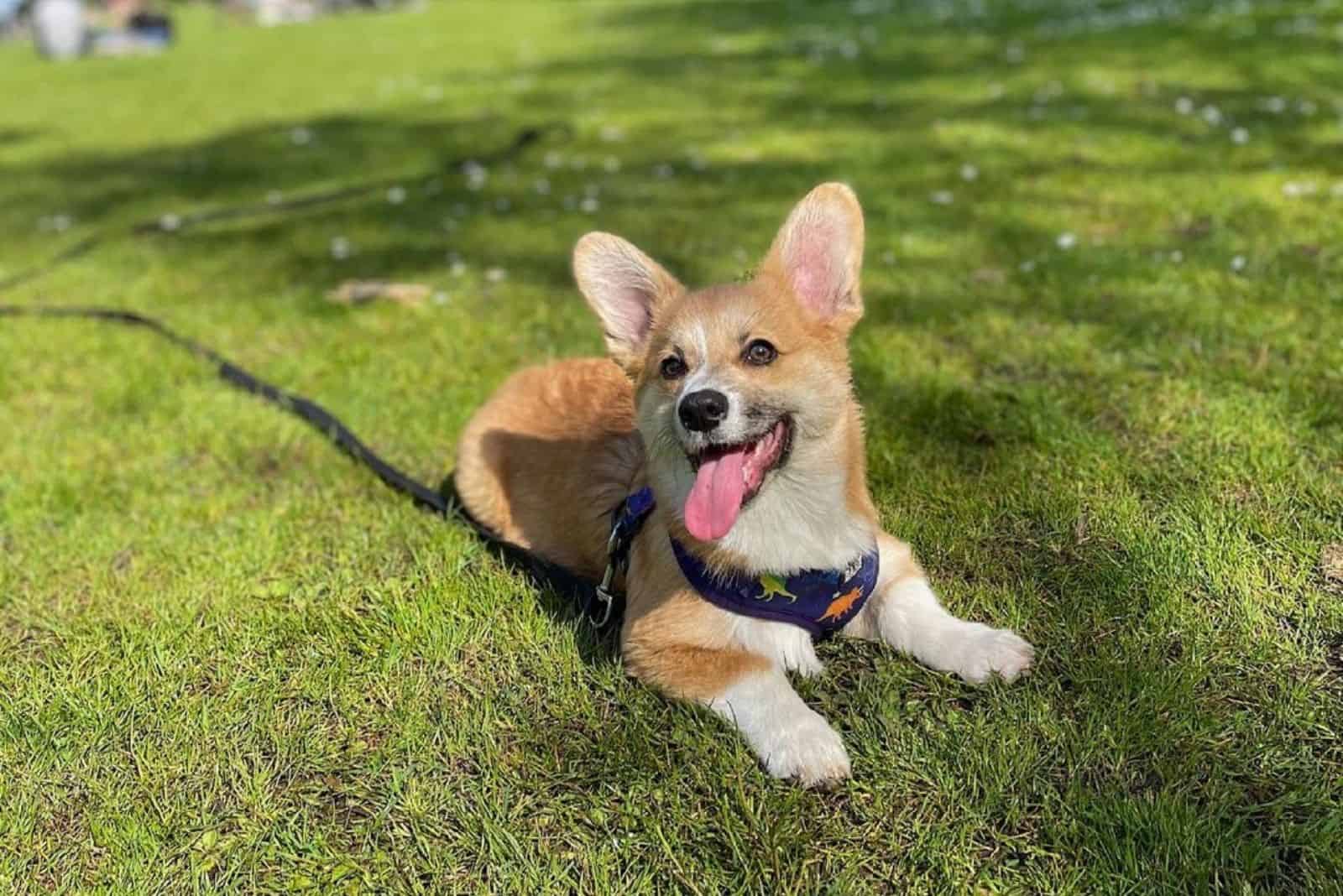
The simplest answer to this question would be “Yes”. Jokes aside, both of these types can be fluffy.
The recessive gene has made them quite unique among Corgis, which might be one of the reasons why they’re becoming more and more popular nowadays.
So, we got to the point of understanding that there are Cardigan and Pembroke Welsh Fluffy Corgis. And, now it’s time to go into further details about these two types of Corgis.
So, Pembroke Fluffies originate from the Nordic Spitz. They came to Wales, along with the Vikings, and have become a symbol of this country.
On the other hand, Cardigan Fluffies are believed to be descendants of the German Teckel bloodline that appeared in central Europe, along with the Celtic tribes.
Physical differences
The origin of this dog breed isn’t the only thing that is different between these two types of canines. Each of them can be easily recognized by their unique physical traits.
Pembroke Fluffies are smaller in size, and they also have shorter tails. Cardigans have much curvier bodies.
A Pembroke’s body structure is more rectangular, without any significant curves.
Here are the main differences in physical appearance between these two types:
Pembroke Fluffy Corgi
• A more triangular shape of the head
• Almond-shaped eyes
• Straight and rounded ears
• A deeper and lower chest
• A docked tail that’s barely visible
• Different coat shades (black and tan, sable, and red)
Cardigan Fluffy Corgi
• A wider head than a Pembroke Fluffy
• Wide open eyes
• Larger and rounder ears
• A rounded and more muscular chest
• A long and bushy tail
• Different coat colors (brindle and white, blue merle and white, black and white)
Price
There are varieties in price when it comes to Pembroke and Cardigan Fluffies based on the rarity of the certain type.
Pembroke Fluffies are much more common than Cardigans, which is why the Cardigan fluffy Corgi costs even more.
The price can go anywhere from $600 to $4,000 depending on the quality and rarity of the fluffy puppy.
Most Corgi owners pay somewhere between $1,000 and $2,000, which is a fair price in most cases unless the puppy is really special!
Where Does The Fluff Come From?
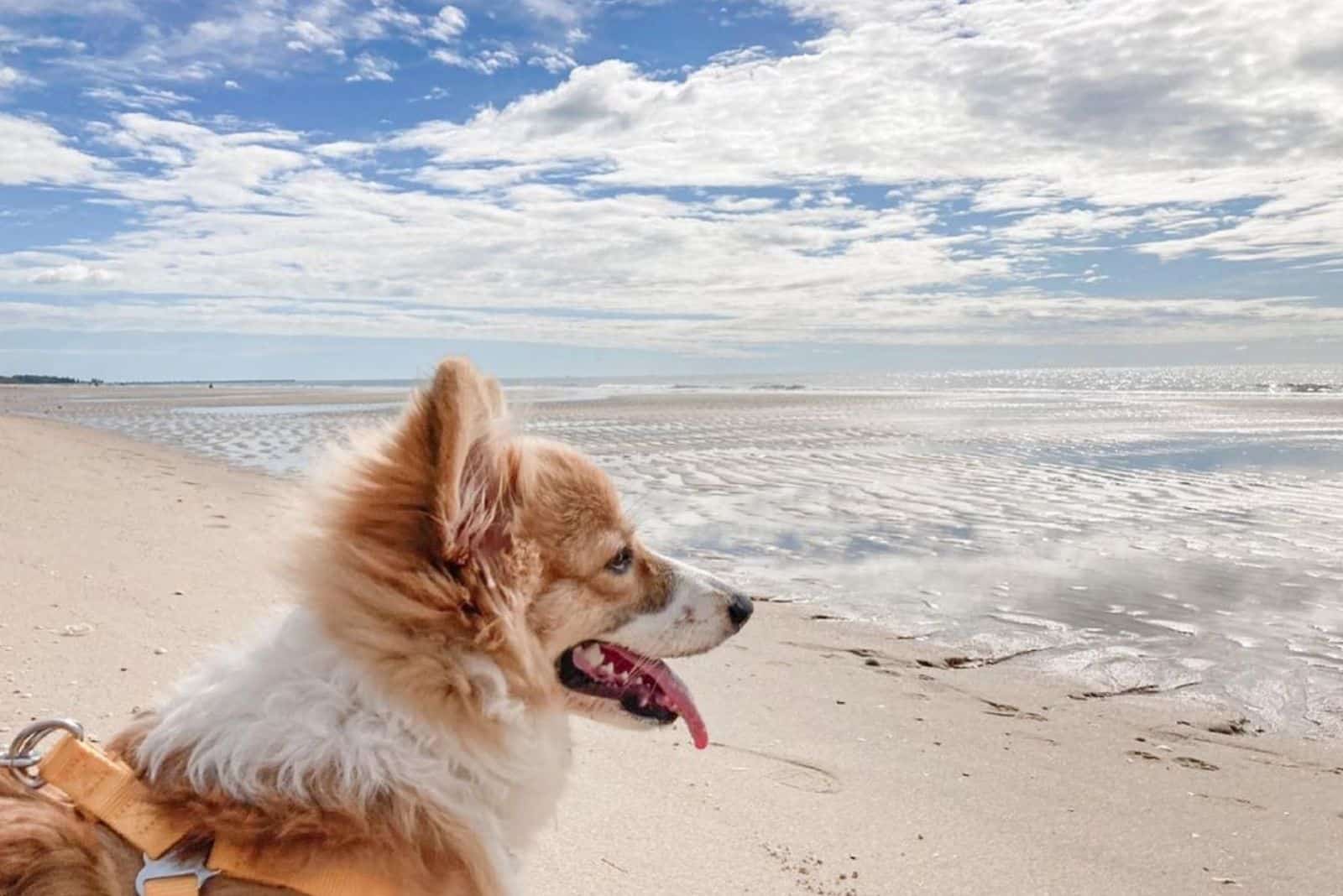
All this fluff isn’t coincidental and doesn’t appear randomly. Basically, the fluffy gene is transmitted from the parents to the puppy, and if they have the gene within themselves, there are high chances your pup will have fluffy hair.
Unfortunately, the gene doesn’t always activate, so it’s no guarantee that you’ll have a fluffy Corgi pup just because one of its parents (or both) has all that beautiful coat hair.
Also, if the adult dogs serve as bearers of the gene, you might end up quite surprised with extra layers on the double coat puppy (a Corgi already has two layers of coat hair).
Corgi puppies aren’t born with all that fluff, so you’ll have to wait at least two or three weeks until it appears. If it doesn’t show up after the fourth week of the puppy’s life, you’re definitely not getting a Fluffy.
Why So Fluffy?
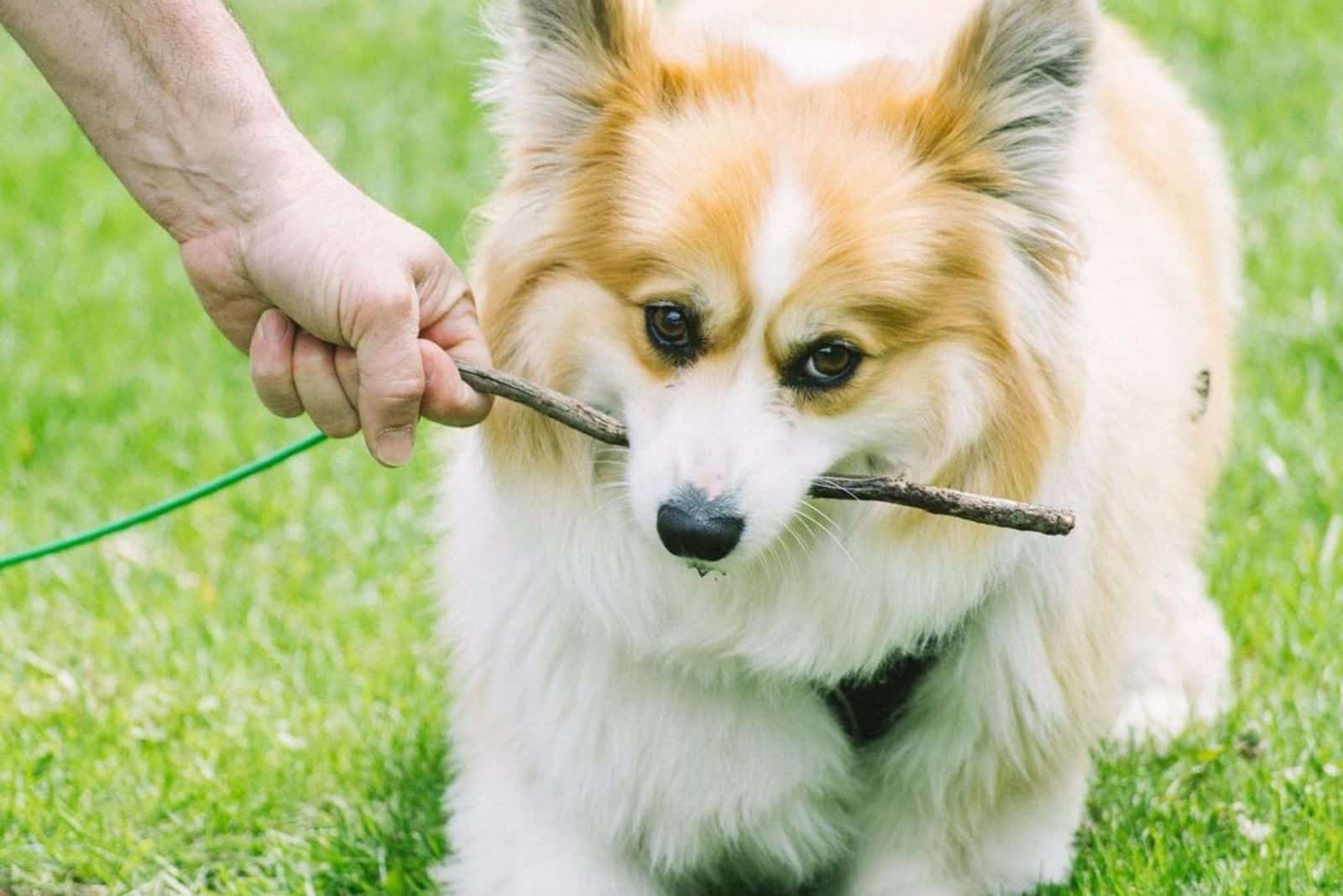
The fluff is a result of the FGF5 gene, which is the main gene responsible for genetic mutations.
Fluffy Corgis generally have a fluffier topcoat that is covered with long hair, and a much thinner undercoat. This is also one of the main differences between a standard Corgi and a fluffy one.
The name of the gene doesn’t sound fun at all, which is why it became the “fluff gene” instead of FGF5 (to be honest, it’s a lot easier to remember).
Easiest said, this gene is the reason why some Corgis have long hair coats with a great amount of fluff. But, what does it do?
To fully understand the whole “fluffy” process, there are a few things about genes that should be mentioned. No need to fear, though… this won’t turn into a biology class (well, maybe just a little bit).
It’s amazing to notice how much impact certain chemicals have on a dog’s development, including its looks, behavior, and everything else!
The body wouldn’t be able to function properly without the help of genes, which is the main part of the DNA. The cells in the body wouldn’t be able to work without these hereditary units that provide them with all the info they need.
Essentially, the body wouldn’t be able to function properly without genes. Simply said, these units are instructions that tell the body what to do. This is also one of the characteristics that humans and dogs share.
However, it’s interesting to notice that the FGF5 gene isn’t really necessary, but it still transfers from one generation to another.
There’s a reason why FGF5 is part of a Corgi’s DNA system. Today, it makes this dog breed even more adorable, but in the past, it had a much more serious role.
Some of the first Corgis were raised in Wales; a country of cold winters and chilly summers. Therefore, it’s no wonder why this dog breed developed a gene that ensured the Corgi’s coat was thick enough to keep it warm.
As I mentioned earlier, these dogs were known as herding canines, so they spent most of the time outside on the hills of Wales.
The FGF5 has proven itself as an amazing, time-resistant gene that is still a part of the Corgi’s DNA, even though they haven’t been used for herding for ages.
But, Where Does The “Fluffy Gene” Come From?
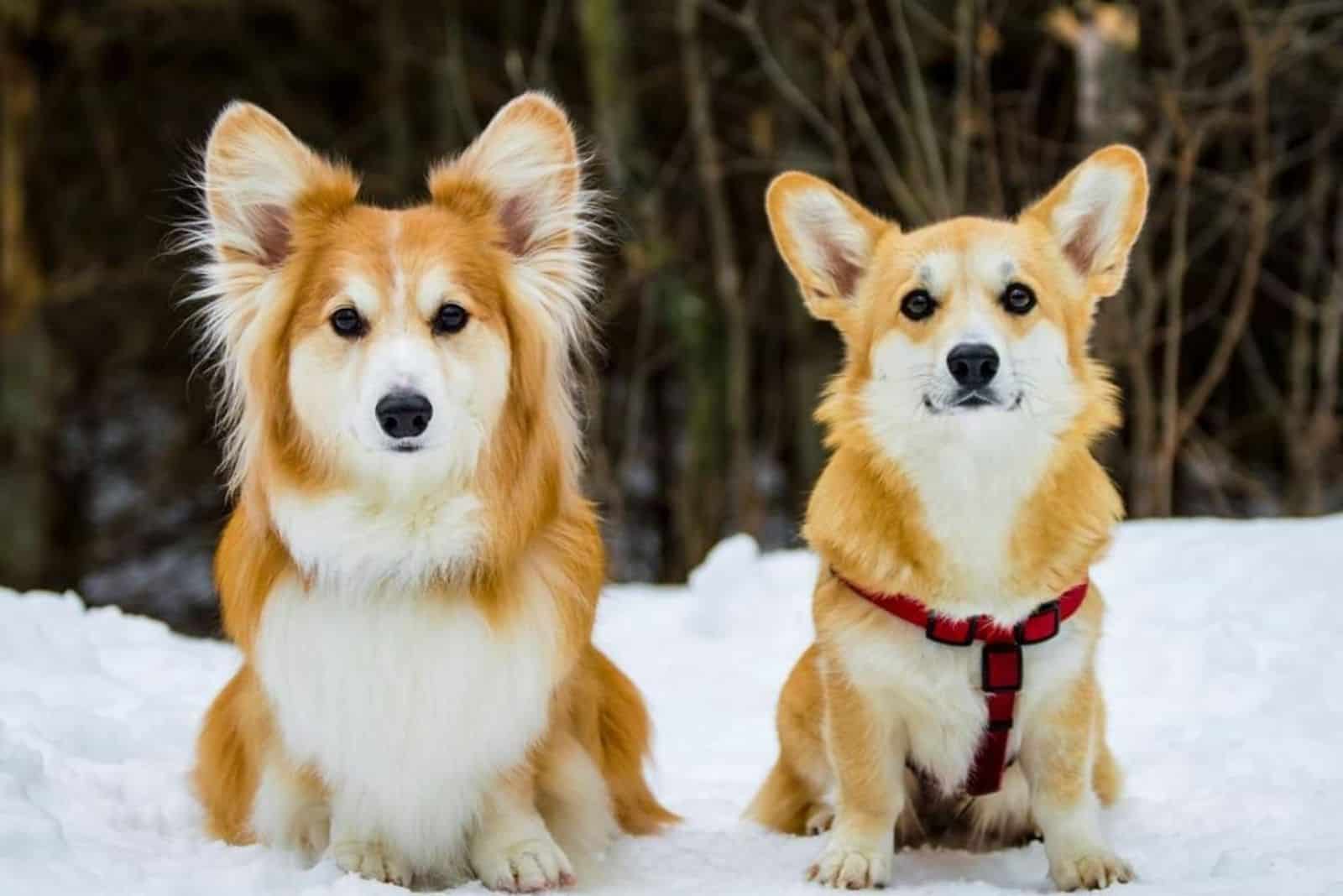
This gene actually originates from the Spitz dogs. Wondering what Spitz breeds are? Read on and discover what this type of dog represents!
There are certain breeds that share a great number of similarities. Of course, there are lots of differences between them in terms of size, height, lifespan, and weight, but all of these traits are rather consequences of their evolution, although they share the same ancestor.
Types of Spitz dogs
There are 16 Spitz dog breeds that are acknowledged by the AKC, although some sources claim the number could go up to 70, but most of them can’t be precisely defined.
Here are the dog breeds that are defined and classified by the AKC:
• Akita
• Swedish Vallhund
• Icelandic Sheepdog
• Samoyed
• Alaskan Malamute
• Norwegian Elkhound
• American Eskimo Dog
• Norwegian Lundehund
• Keeshond
• Finnish Lapphund
• Norwegian Buhund
• Finnish Spitz
As you can see, Corgi dogs aren’t on this list, although they do share some traits with the Spitz canines. This is mainly because they went through major changes that affected other genes, which are crucial to becoming a part of the Spitz dog club.
Unfortunately, fluffy Corgis aren’t classified as a Corgi breed or as a Spitz canine. Fluffies aren’t even recognized as show dogs in a great number of competitions!
Similarities
All Spitz breeds have several physical traits in common such as almond eyes, thick, double coats, and pointed ears which aren’t of the same size, but have similar shapes.
Corgis share most of these characteristics as well, with a few modifications that resulted in Corgis being an independent dog breed with several subtypes, too.
Pointy eyes and ears are probably the most common similarity among Spitz canines, including Corgis, which is why most dog experts believe that this dog breed originates from the Spitz breed as well.
Although the fluffy gene has been there for centuries, that’s still not enough for Fluffies to be recognized as a dog breed.
Some experts go as far as to say that the long-haired Corgis are faults rather than a separate canine type. Of course, fluffy Corgi owners are far from happy with this thesis.
This encouraged a number of Corgi breeders to produce more of them and make them more common than they currently are.
Do Fluffy Corgis Have Blue Eyes?
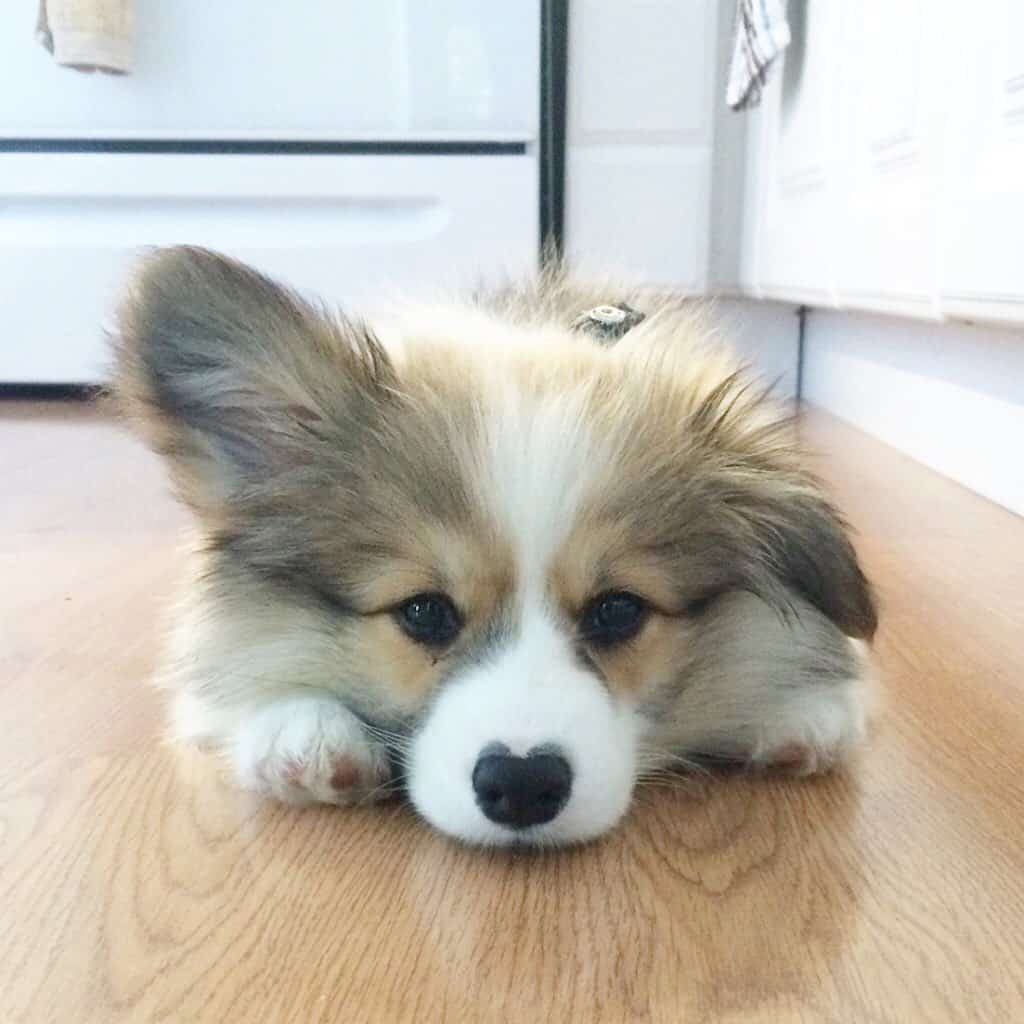
Photo from: @hudsonthefluffycorgi
There are fluffy Corgis that have blue eyes, but even those with thinner coats may have them.
Blue eyes seem much more common than they really are in nature among dogs and humans as well. It’s believed that only 8% of people actually have blue eye color, mainly those who live or descend from northern Europe.
The blue color is more common among dogs, but the chances are still quite low. Only if both parent dogs possess blue eyes can a Corgi puppy have them as well.
There might be a few exceptions, but in general, it’s very rare to find a dog with both blue eyes.
However, this might be a good thing because blue eyes among Corgis and Fluffies aren’t recognized as a breed standard.
The American Kennel Club (AKC) approves one or both blue eyes for the Blue Merle Corgi breed only because they carry the merle gene that makes their eyes blue.
This just proves that genetics play an important role not only in our lives (as humans), but also in the lives of our pets.
That’s why it’s crucial to find a trustworthy breeder who guarantees every dog from its facility. It’s easy to make a champ from a champion lineage, and almost impossible to have one if there’s no genetic background for it.
Are Fluffy Corgis Purebred?
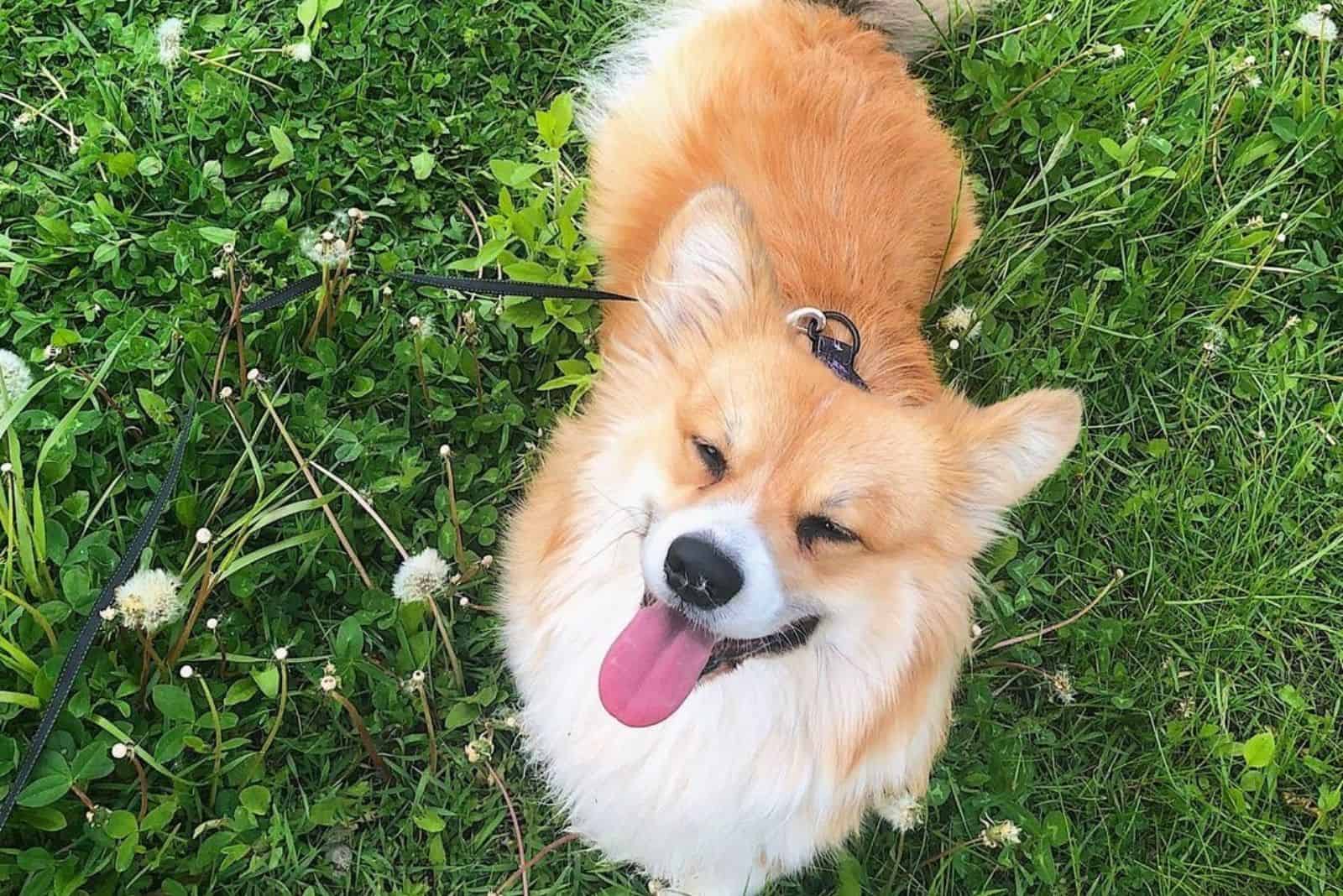
Unfortunately, Fluffies aren’t considered to be a breed at all, but rather a fault.
Although there are pieces of evidence that prove the existence of the FGF5 gene, that’s not enough to recognize this type of canine as a dog breed.
This information isn’t of great importance for dog owners who are looking for a cute family pet they can cuddle all the time.
However, it’s critical for professional dog breeders and owners who are going to competitions.
Some showrooms share the same opinion about these fluffy puppies, finding their coat as a genetic mutation simply because the breeding process wasn’t intentional.
What Is The Distinction Between A Fluffy And A Regular Corgi?
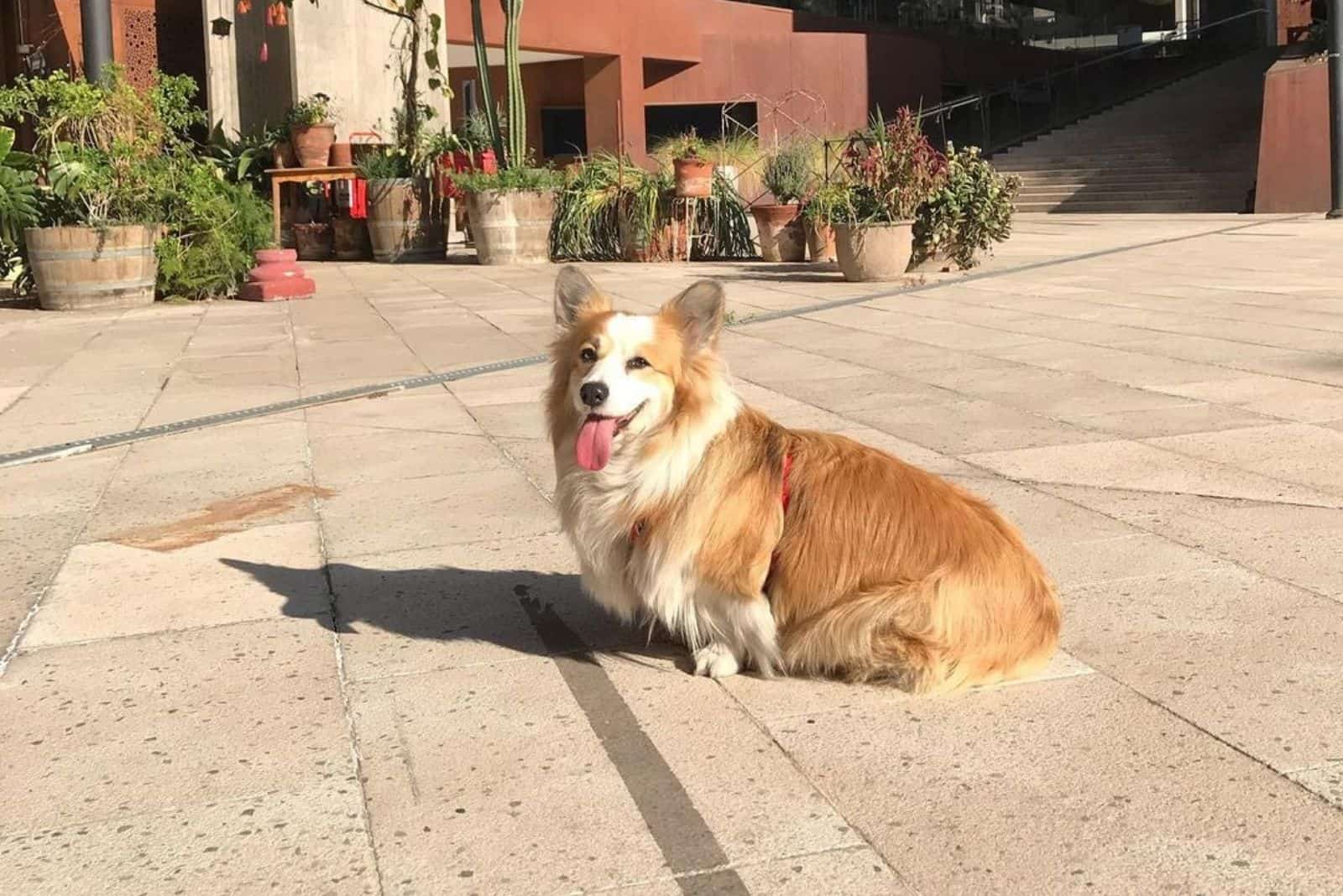
The main difference between these two types of Corgis is the length of their coats.
I’m sure you had the chance to see at least several Corgis by now, but did you ever come across the fluffy version?
Maybe you did, but you couldn’t notice the difference, so now’s your chance to learn how to distinguish a fluffy version from the original one.
The standard Corgi
Traditional Corgis are covered with a thick and warm coat that keeps them comfortable during the cold weather.
Some people might say that proper Corgis are already fluffy, and they wouldn’t be wrong, but there are even fluffier versions that you can’t stop cuddling (my corgi keeps me at a distance because of it, lol).
It’s interesting to notice that the “original” versions also have long hair, but only in certain places like the hindquarters, chest, neck, shoulders, or forelegs.
The American Kennel Club has pretty strict rules when it comes to Corgis, including the quality of their coat hair.
According to them, the only acceptable coat is the one with straight, medium-sized hair that’s thick and healthy. If the coat hair is too long, too short, thin, wiry, or curly, it’s not up to the breed standard.
Fluffy Corgi
Fluffies are essentially Corgis with long coats, which is a result of the fluffy gene. Their owners describe them as the cutest cuddly pets for the whole family, but dog experts might not share the same positive attitude.
They rather describe them as canines that have excessively long coat hair. The chest, legs, hindquarters, and even ears are covered with excessive feathering, according to the experts.
Unfortunately, some breeders and dog owners decide to trim their dogs so they can appear as standard Corgis in dog shows and competitions. However, this method has been proven unsuccessful many times, so I wouldn’t really recommend it.
It won’t always be easy to make the distinction between the two, especially during their puppy days, but if you’re looking for a family Corgi, does it really matter?
The most important part is to find a reputable breeder who’ll provide you with a healthy Corgi puppy, fluffy or not.
How Do You Groom A Fluffy Corgi?
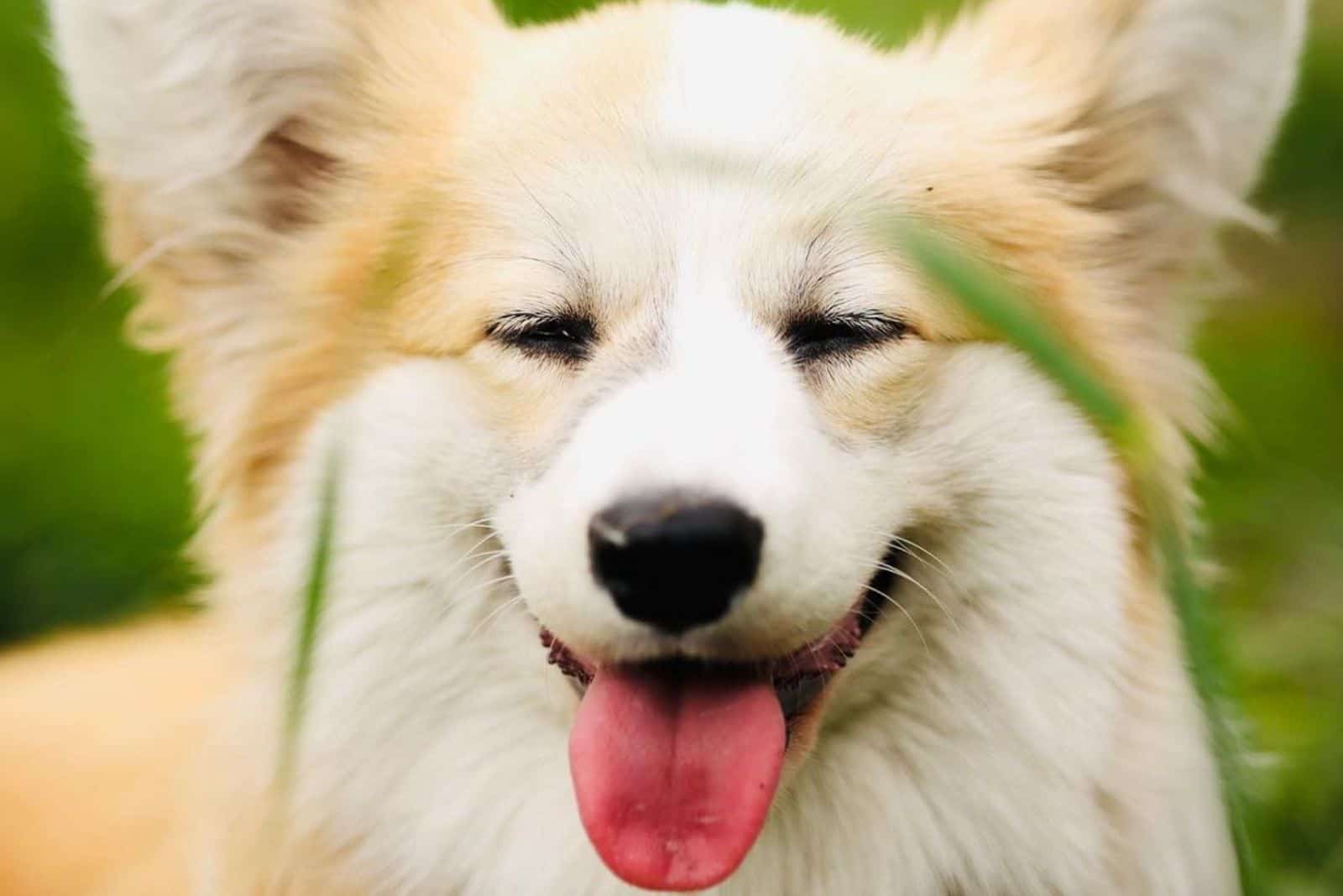
Grooming might not seem an easy task for a long-haired dog like a fluffy Corgi, but it’s also far from an impossible thing.
Pembroke and Cardigan Corgis shed quite a lot during the whole year. This also applies to both Corgis with long and medium coat hair.
Corgis require more care during summer and winter as they shed even more during these two seasons.
The best way to deal with these shedding issues is by getting a good dog brush that can easily go through longer coat hair, or finding a good groomer and letting a professional handle it (which might be quite expensive for some dog owners).
Grooming tips
Some people might find grooming as a tedious task, and others may not know where to start. Therefore, I decided to share some tips that might help you groom your pet in no time:
• It’s always better to comb your dog’s coat in a line, from the root to the end of the coat hair. A Greyhound comb will become your best friend during the non-shedding season, which is easily available on Amazon.
• Some people use furminators for their pets, but you’re not obliged to do so if you don’t find it practical or comfortable. Instead of this device, you can get a high-quality rake for canines during the shedding seasons. Use the rake every seven days during the winter and summer months to avoid excessive coat hair all around the house.
• Good hygiene is half the work. The optimal time for washing your pet is anywhere between four and six weeks. Make sure to use a shampoo and a conditioner that’ll keep the coat soft and shiny.
• Don’t forget about the paw hair and nails. The best way to trim them is by using curved shears that won’t cause any accident.
• Go to the groomer at least a few times a year (two or three visits are just fine). Although you can do most of the things at home, it would be best to let a professional cut the dog’s hair and clean the dog’s eyes, ears, etc.
If you follow these steps, your doggie will leave minimal traces around the house, and you won’t have to vacuum every few hours anymore!
Bonus tip for Fluffies
Taking care of a fluffy Corgi does require a bit more time, so you might have to brush its coat once a day to prevent matting.
It won’t take more than 10 to 15 minutes of your time, but it’ll keep your Fluffy safe from dirt and mats.
How Do You Recognize A Fluffy Corgi Puppy?
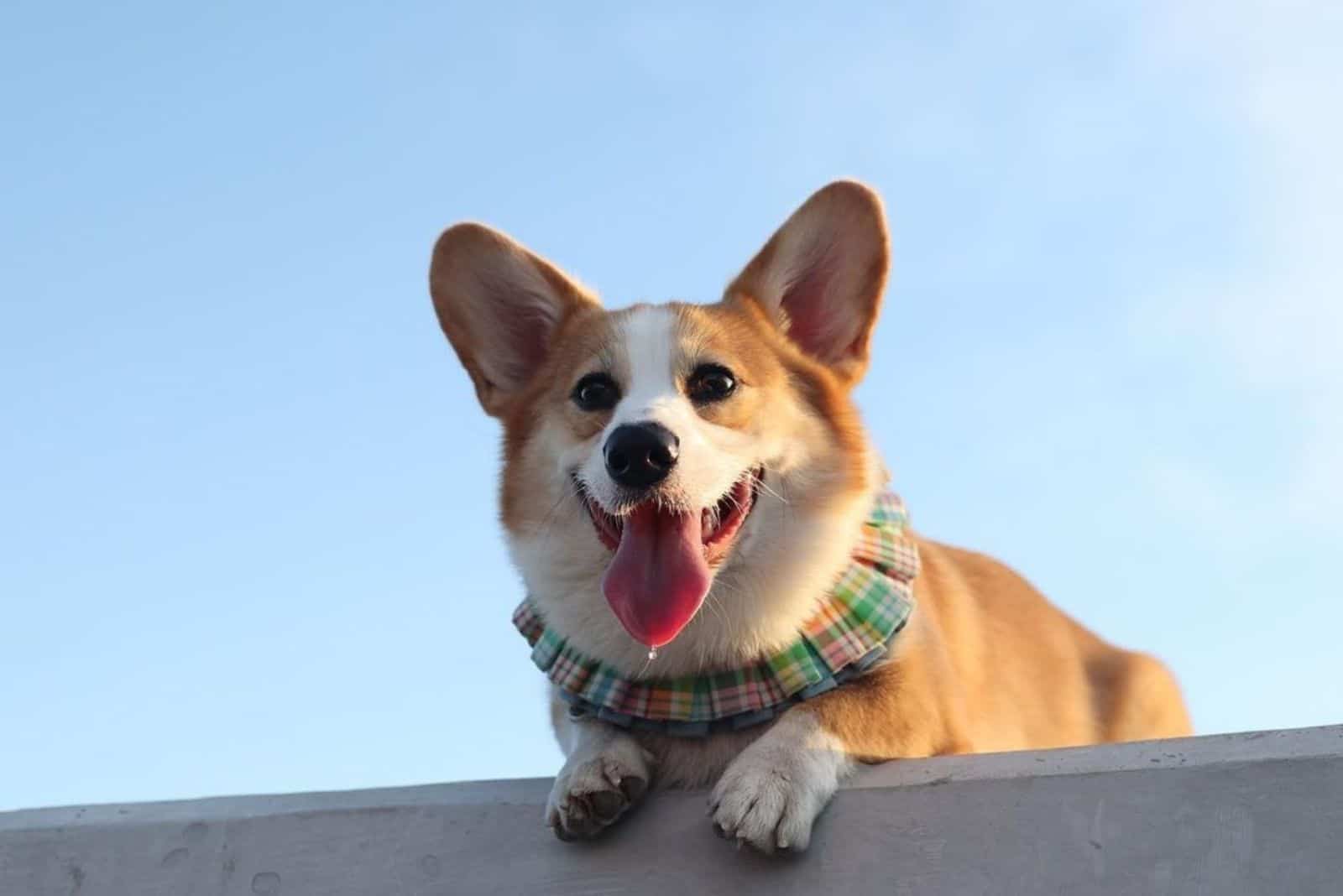
You won’t be able to visually tell if a Corgi puppy is fluffy or not before the third week of its life.
If you can’t wait that long, you might contact the breeder you chose and ask him to visit the puppy while it’s part of the litter that is still connected to its mother.
This way, you’ll be able to have a closer look at the mother and other puppies in order to see whether they have any additional hair on their chest, legs, or ears.
If you notice additional fluff on the parent, there are good chances that you’re getting a fluffy Corgi as well.
However, I’d still advise seeing the puppy in person after the fourth week of its life when you can confirm with confidence whether your future puppy is a fluffy Corgi or not.
However, I wouldn’t worry too much about it because both types, long- and short-coated, are cuteness overload, and I’m sure you and your family would give an equal amount of love to each of them.
What Are The Potential Health Issues?
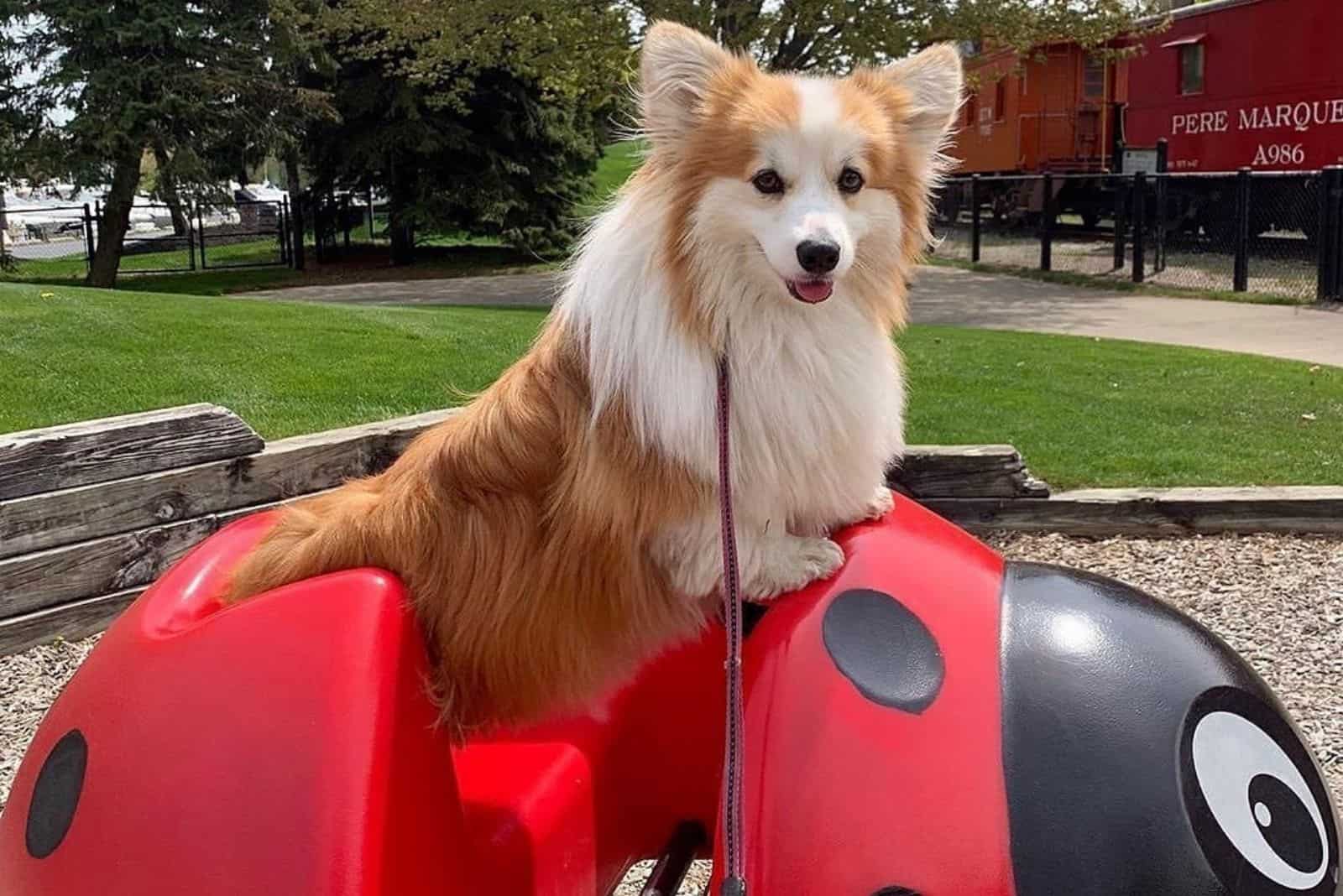
When it comes to health, fluffy Pembroke Welsh Corgis share the same problems as fluffy Cardigan Welsh Corgis.
The most frequent health issues that both breeds can experience are:
• Epilepsy – One of the main causes of dog seizures that can be treated with great success in the early stages. The main symptoms include twitching, drooling, running in circles, or staring at a wall or an empty space.
• Von Willebrand Disease – This is a common condition that affects the Pembroke Welsh Corgi (both fluffy and the standard version), the Manchester Terrier, the French Poodle, and other dog breeds. Essentially, this is an inherited condition that doesn’t allow the canine’s blood to clot.
• Hip Dysplasia – This is a very common deformity among many dog breeds, including fluffy and standard Corgis. It’s one of the main causes of limping.
• Intervertebral Disc Disease – Corgis are a long-backed type of canine that can easily develop spinal issues, mostly because they’re prone to disc ruptures. One of the most frequent signs of this disease is a loss of coordination.
• Cataracts – Unfortunately, Corgis often have problems with vision that can’t be resolved without surgery, and once you solve the problem, your dog will be able to see without problems.
• Degenerative Myelopathy – An illness that has a direct impact on the spinal cord. It doesn’t cause any pain to the dog, but it drastically decreases the quality of the canine’s life. Unfortunately, it might lead to dog paralysis in later stages.
Of course, your dog might be in perfect health throughout its whole life, without getting any of the diseases mentioned above.
However, this list of possible health issues might help you notice early symptoms in time.
Also, there are fewer chances that your dog will develop any of these issues if the puppy comes from a reputable breeder or someone who raises dogs in an ethical and healthy environment.
If the price is too low compared to other breeders, there might be a hidden issue. Also, make sure to check whether you receive all health certificates before you take the puppy, or else you might be easily tricked by a non-reputable breeder.
Fluffy Corgi Puppies For Sale
Fluffy Corgis are quite rare, so it’s not very easy to find any trustworthy breeder. That doesn’t mean there aren’t any, but it might take you more time and effort to find them.
To save you some time from hunting down trustworthy breeders and organizations, I made this short list that I hope will be helpful to you:
• Pembroke Welsh Corgi Club of America, Inc – The PWCCA is a great place to start the search for your fluffy pup. They have a directory of contact numbers of Corgi breeders. You can access the directory after you become a member on their website.
• American Kennel Club (AKC) Marketplace – No, fluffy versions aren’t acknowledged by the AKC, but you can still find one in their directory. The best way to do so is to contact the Corgi breeders from their list that are near you and ask them whether they have a fluffy version as well.
• The Perfect Corgi – A reputable breeder that offers a health guarantee for each puppy from their facility. This breeder is associated with financial organizations for puppies, which reduces the initial cost of the puppy.
• Magnolia Creek Corgis – Here is another reputable fluffy Corgi breeder that offers all documentation, including health certificates. Every puppy goes through thorough vet checkups before they’re sold.
Fluffy Corgi Mix
Mixed breed Corgis can be fluffy as well, although this fluffiness could be inherited from the other part rather than the fluffy Corgi.
Here are some of the most interesting Corgi mixes that’ll make you fall in love with them in a matter of seconds:
Fluffing Up
Did this article make you want to own at least one fluffy Corgi?
Let me tell you that you’re not the only one! The first time I saw this little fluffy creature, I immediately fell in love with it, and it has been a part of my family for some time now.
This type of dog is perfect for dog owners who prefer cute doggies with playful and friendly attitudes. Fluffy versions are even cuddlier, and I’m not sure you’ll be able to stay away from them for more than a minute!
Corgis are great with kids, and I’m sure your little ones will love them as well!
There’s perhaps only one downside to owning this type of canine, and that is the excessive coat hair loss. You’ll keep finding Corgi hair everywhere around the house.
But, I’m sure you can take a bit of your time every day to brush your pet, which will be of great help for the shedding issue.
Just keep in mind that Corgis aren’t hypoallergenic; therefore, if there are allergy sufferers in the house, you should take even more care of the shedding issue.
Read Next: Fat Corgi Is a Problem — What To Do?
